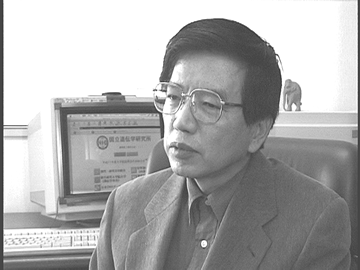"Clusters are seemed as very important cost effective way of doing business now, in this country at least. Increasingly, cluster computers put forward in regular base to replace traditional supercomputers.
One of the things I was always impressed with RWC computing cluster was that it was actually manufactured to be a cluster and they actually did a work to do nice packaging, make it altogether in one place and really good, much perfection about it.
A lot of other clusters have been more of the "Let's just stock up some computers and see what's going to happen!" And I think they have done a very good job with this machine.
This is a significant computational resource, and we would like it to be a part of our network. I want to stress that when it become a part of network, we are not taking over the machine.
It is more like storing the community of machines and so it can be moved around in between. And so we are really interested in getting this machine into our network, because it's such a, It's a large machine."
"They are one of the sets of people that, sort of pushing that frontier of particularly Linux, Extreme Linux sort of stuff, keeping staff going.
I think it's a good job, I really think they are doing nice job."

Andrew S. Grimshaw is an Associate Professor of Computer Science and director of the Institute of Parallel Computation at the University of Virginia. He is the chief designer and architect of Mentat and Legion.













